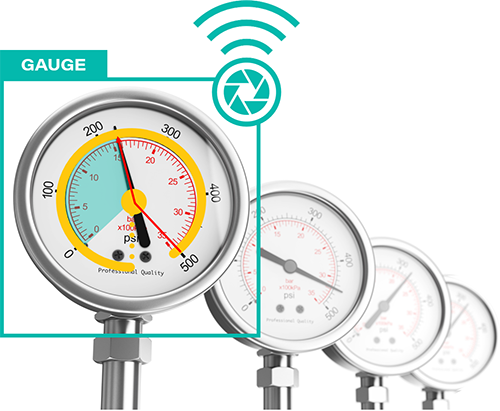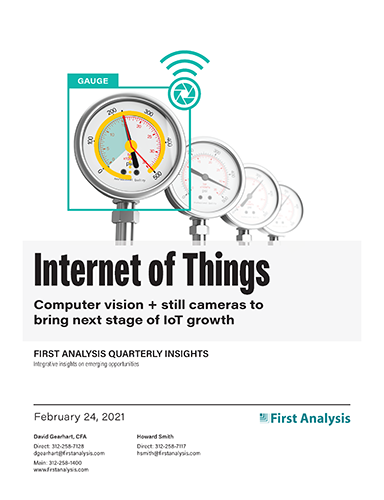Quarterly insights: Internet of Things
Computer vision + still cameras to bring next stage of IoT growth

Computer vision has helped make video one of the hottest areas in IoT. That success has set the stage for computer vision to drive rapid growth in non-video camera-based solutions.
In this next phase of growth, we think computer vision will find its greatest traction in applications that use still images or series of images captured at much lower frame rates than video. We profile a handful of the many areas where we think still-image-based computer vision solutions will see strong growth, including analog gauge reading at industrial sites, retail shelf management, crop health management, and manufacturing floor management, and we provide examples of innovative companies pioneering these markets.
The same factors driving adoption of traditional sensor-based IoT solutions should also be tailwinds for still-image computer vision systems. These include declining hardware component and data connectivity costs, more flexible and customer-friendly business models, improving technology, and compelling return on investment.
We think IoT solutions combining computer vision with still-image cameras will see fast growth as their unique advantages and capabilities find economically compelling applications that represent expansions of the IoT total addressable market.
TABLE OF CONTENTS
Includes discussion of four private companies
- Computer vision’s success in video sets the stage for growth in other areas
- Wide range of use cases
- Mobile or stationary cameras?
- Compelling economic advantages in many emerging use cases
- Computer vision + still image cameras further extend IoT’s reach
- IoT index pulls ahead of the Nasdaq
- M&A gains traction as the year begins
- Private placement activity slows to a trickle
Computer vision’s success in video sets the stage for growth in other areas
Computer vision – software that recognizes objects and patterns like the human brain does – has helped make video one of the hottest areas in IoT based on the volume of cameras deployed over the past few years in applications such as residential security and commercial vehicle telematics. Now, computer vision’s success in video applications has set the stage for it to drive rapid growth in non-video camera-based solutions.
Computer vision makes it possible to quickly extract intelligence from still images and video. Computer vision system developers first teach their systems what to look for – typically using curated training data that includes large quantities of still images and videos and iterative machine learning processes – so they can identify an image’s components. With its high speed and accuracy, computer vision can greatly improve the efficiency of many processes that traditionally rely on human observation. For example, in connected security, computer vision can efficiently determine whether a person or vehicle is authorized to enter a space, distinguish intruders and animals, and detect leaks and fires, leading to faster responses to problems. Similarly, in video telematics, computer vision can automatically identify, highlight and capture video showing unsafe driving, leading to lower accident rates and fleet maintenance costs.

Request full report
To access the full report, please provide your contact information in the form below. Thank you for your interest in First Analysis research.
